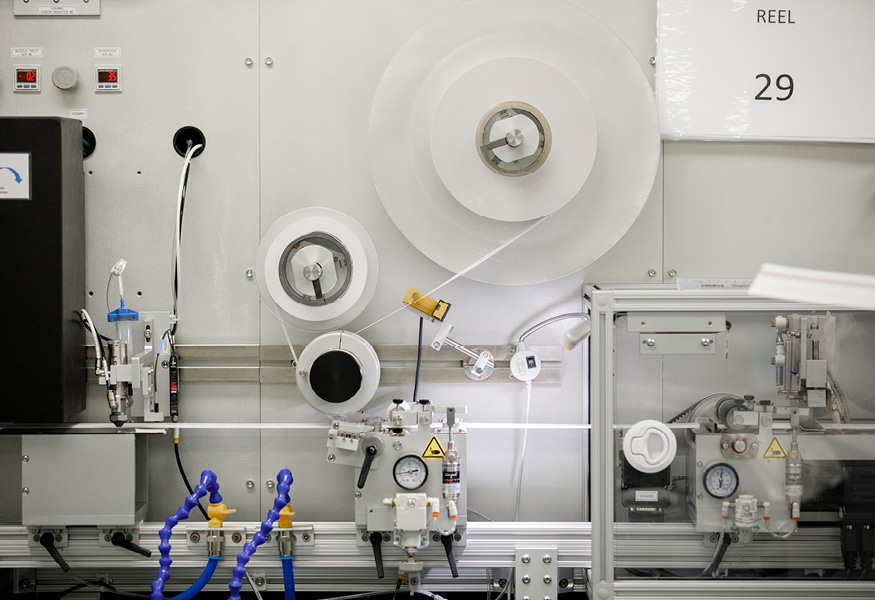Glucose Dehydrogenase
Advancing diabetes care, together
We’re excited to introduce a recombinant FAD-dependent Glucose Dehydrogenase (FAD-GDH) designed for use in continuous glucose monitoring devices – supporting more accurate and reliable diabetes management.
BBI Solutions offers a next generation FAD-Dependent Glucose Dehydrogenase (FAD-GDH). FAD-GDH with reduced xylose interference is part of our market-leading range of enzymes for blood glucose monitoring, it reduces crossreactivity with a range of sugars, provides increased specificity to glucose and improves reactivity and stability.

Brochure
Glucose Dehydrogenase (FAD-dependent) – Product Specification
BBI Solutions offers a next generation FAD-Dependent Glucose Dehydrogenase (FAD-GDH). FAD-GDH with reduced xylose interference is part of our market-leading range of enzymes for blood glucose monitoring, it reduces crossreactivity with a range of sugars, provides increased specificity to glucose and improves reactivity and stability.
Download
FAQs
FAQs
What is the difference between Glucose Oxidase and Glucose Dehydrogenase?
When these enzymes react with glucose, they do so using a different chemical mechanism.
Glucose oxidase catalyzes the oxidation of glucose to produce gluconic acid and hydrogen peroxide. This enzymatic reaction is specific to glucose and utilizes molecular oxygen as the electron acceptor.
Glucose dehydrogenase catalyzes the oxidation of glucose to produce gluconolactone and reduce a cofactor molecule, typically Flavin adenine dinucleotide (FAD) or Nicotinamide adenine dinucleotide (NAD). The reaction requires this cofactor is present to react.
Why does GO vs GLD matter?
As GO reactions require oxygen to be present, when less oxygen is available, such as higher altitudes, performance can be less reliable. As GLD is an oxygen independent reaction, it performs consistently in these environments.
What test types can you use GLD4 in?
Glucose dehydrogenase is typically used in electrochemical tests for glucose, such as test strips or continuous monitoring sensors . We have tested performance in both wet and dry sensor formats.
Request a sample
Product Information: Glucose Dehydrogenase
| Product Description | Glucose Dehydrogenase |
|---|---|
| Product Code | GLD4 |
| Systematic Name | D-Glucose: (flavin adenine dinucleotide) dehydrogenase / Glucose dehydrogenase (FAD-)(III) |
| EC Number | 1.1.5.9 |
| Source | Microorganism (E. coli) |
| Site of Manufacture | Crumlin, UK |
| Activity | >300 U/mg material |
| Format | Freeze-dried |
| Storage | Store desiccated at -15°C or below |
| Shelf Life | 12 months from manufacture |
| Purity | >90% |
Key Benefits
Cost effectiveness

Increased reactivity allows the use of fewer units per test.
Improved stability

Improved pH and temperature stability enhances reliable test performance.
Increased accuracy

Reduced cross-reactivity with Mannose, Galactose, and Xylose, providing increased specificity to glucose
Supply security

Bulk supply available, offering control over manufacturing processes and supply chain
The table below shows the specificity for our different grades:
| GLD1 | GLD3 | GLD4 | |
|---|---|---|---|
| D (+)-Glucose | 100% | 100% | 100% |
| D (+)-Galactose | 0.41% | 0.27% | 1.98% |
| D (+)-Maltose | 0.30% | 0.67% | 6.89% |
| D (+)-Mannose | 4.50% | 1.73% | 1.08% |
| D (+)-Xylose | 12.40% | 1.60% | 6.07% |
| 2-deoxy-D-glucose | 43.20% | 39.8% | 56.2% |
Specificity was measured by substituting glucose with the above sugars at the same concentration, 1M, in the BBI FAD-GLD assay.
Which grade is right for me?
Our three grades of FAD-GDH (GLD1, GLD3 and GLD4) offer
proven performance in a range of systems. The decision on which one is right for you will depend on your individual application.
Get in touch with our team to discuss your needs
Contact Us
Highlights
Manufacturing

Security and continuity of supply, UK based manufacture
Scalable

Scalable to bulk quantities to meet global demand
Samples

Samples now available
Proven applications

Proven in biosensor and electrochemical applications
Request a sample
To request a sample please fill out the order form by clicking the button below. Samples sizes are 30KU.
Request a sample





